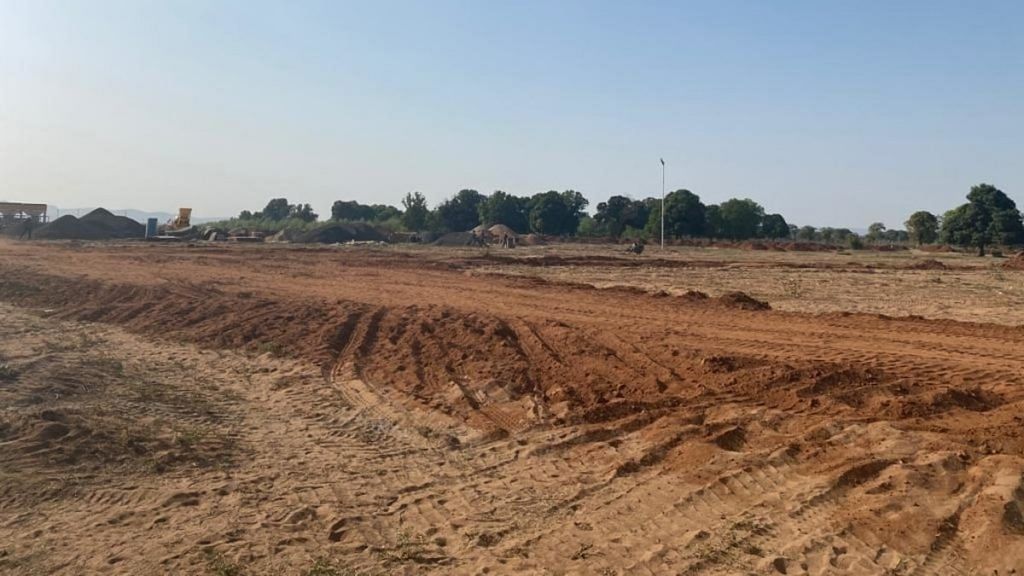Hoshangabad: Madhya Pradesh has no oxygen plant of its own. As the second Covid-19 wave ravages the state with a daily caseload of over 13,000 cases, it is importing oxygen cylinders from Gujarat, Chhattisgarh, Uttar Pradesh and Maharashtra. The desperate need of Covid patients, however, would have eased had the massive Inox oxygen plant in Hoshangabad moved at a fair clip.
Chief Minister Shivraj Singh Chouhan had laid the foundation stone for the UP private company’s Rs 150 crore private oxygen plant in October 2020. He had promised that the plant would be functional in six months, and that the state would not face any shortages.
ऑक्सीजन की कमी का विषय महत्वपूर्ण था, इसलिए मैंने व्यवस्थाओं की समीक्षा की। हमारे यहां प्रारंभ में ऑक्सीजन की उपलब्धता केवल 50 टन थी, जिसे बढ़ाकर 120 टन कर दिया गया है।
मैं प्रदेश की जनता को आश्वस्त करता हूं कि ऑक्सीजन की कोई कमी नहीं रहेगी। pic.twitter.com/gw3dg7CQox
— Shivraj Singh Chouhan (@ChouhanShivraj) September 10, 2020
The only such facility to be set up in the state was to produce 150 metric tonnes (MT) of liquid oxygen per day and 54 MT of liquid nitrogen per day.
But as of today, the factory land fenced with metal some metal rods has just heaps of sand and stones.
Madhya Pradesh’s National Health Mission Commissioner Chhavi Bhardwaj told ThePrint that everyday the state required about 390-400 MT of liquid oxygen. “It’s touch and go. It’s a daily battle. Demand for oxygen has increased drastically. Madhya Pradesh doesn’t have its own plant,” she said.
On Tuesday, MP reported 98 Covid deaths across the state.
Oxygen more precious than gold
At the entrance of Super Speciality Hospital in Indore, rows of old, used oxygen cylinders stood as doctors awaited a fresh supply.
But some doctors have found a way to use it more judiciously so they can treat more patients. Dr Ravi Dosi, a pulmonologist at Sri Aurobindo Hospital in Indore, explained how they were auditing oxygen.
“Oxygen is life saving. You can never deny it to a person who needs it. So we have a strict policy of auditing oxygen. We start at 10 litres, but if the patient is doing well, we get it down to 5 litres and then 2 litres. We also put observers to ensure that oxygen is not being unnecessarily wasted,” said Dosi.
At a review meeting held Tuesday, Prime Minister Narendra Modi was informed that production of liquid medical oxygen in India had increased from 5,700 MT per day in August 2020, to 8,922 MT on 25 April. This comes at a time when hospitals across the country are refusing patients citing oxygen shortage.
Also read: Tejas aircraft tech comes in aid of oxygen-starved Indian cities. This is how it works
‘Work began in March’
A security guard at the Inox hoarding at the plant in Hoshangabad located in the Mohasa-Babai Industrial Area said work on the plant really began only in March this year.
The construction manager of the plant Soumya Biswal, however, said work began on the plant in December 2020.
Speaking to ThePrint, Rakesh Tiwari, a manager at the Madhya Pradesh Industrial Corporation (MPIC), the nodal department for the plant, explained that the Inox plant came under large industries and according to their contract, they are given at least 3-4 years to begin production.
Asked about Chouhan’s six-month promise, Tiwari skirted the question, pointing out the acres of land it is being set up on.
“This plant is being constructed across 11 acres of land, with an investment of Rs 150 crore. Production will take some time to begin. Right now the boundary wall needs to be completed, building needs to come up, then foreign machines will be brought. Therefore production will take some time,” he said.
Biswal told ThePrint he expected construction to be completed in one and a half years.
Also read: ‘Indian strain’ of coronavirus found in 17 countries, says WHO
Situation in big cities
While the plant is far from the production stage, the state’s big cities are struggling with the lack of oxygen.
Rajesh Gupta, joint collector, in-charge of oxygen in Bhopal and neighbouring districts said in March, the city’s oxygen requirements were 25-30 MT a day, which has now doubled to over 80 MT.
“The city has two atmospheric saturation units which fill close to 1,600 cylinders. However, Bhopal also supplies oxygen to nearby areas such as Raisen, Vidisha, Sehore and Rajgadh. And now, we are also giving oxygen to places such as Dewas, Guna and Hoshangabad,” said Gupta.
Rohan Saxena, exectutive director, MPIC, who is in-charge of Indore’s oxygen demand, explained that while the city was able to meet the demand of 125 MT per day, it was a daily struggle. Like Bhopal, Indore also provides oxygen to nearby areas such as Dhar, Ujjain, Khandwa and Mansaur.
According to the health bulletin Tuesday, Indore and Bhopal accounted for over 34 per cent of the Covid deaths in the state.
(Edited by Amit Upadhyaya)
Also read: Tocilizumab is nowhere to be found, and no one seems to know of next availability
